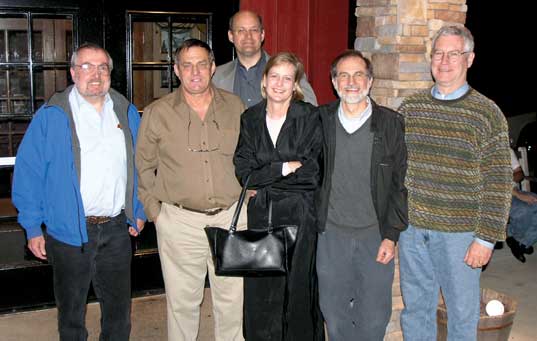Broadband Over Power Lines
(BPL) Communications Takes Front Stage
The EMCS Standards Development Committee (SDCom) is fully engaged
in what is needed to standardize EMC measurements of emissions
from power lines which will be (some installations are already
on line) sending data to customers who simply plug their computer
into the power outlet. The data of course will be what we now
get by our Internet access via cable, satellite, or dial up telephone
connection. BPL typically occupies between 5 and 25 MHz of spectrum
to operate in the frequency range between 2 and 80 MHz. Hence,
BPL energy and emissions are found over a relatively broad band
of frequencies that are used by radio services. Therein is the
issue as these radio services should not be degraded but at the
same time, the BPL should also be allowed to be present providing
the EMC aspects of non-interference is maintained with the radio
services.
The SDCom at its 7 March meeting in Research Triangle Park, North
Carolina discussed in some depth the subject and the role of the
EMC Society and its SDCom on this topic. In particular, Don Heirman
presented the history of the EMC standards proposal for making
radiated emission measurements of BPL signals and the involvement
of the IEEE Power Engineering Society (PES) which is very interested
in this subject for obvious reasons as the power line is the transmission
medium. Then SDCom member Ed Hare described the emission measurements
he has made and the potential for interference to radio services
including those of the amateur radio operators working in the
same frequency band as BPL. This was then followed by a discussion
by the SDCom chair, Stephen Berger, who indicated the need for
EMCS involvement in any standard that has in its scope EMC measurements
such as one that is being proposed by the PES. A motion was made
and approved to request that this project (identified as P1775)
be co-sponsored by both the PES and EMCS. To further solidify
the SDCom interest in this project, a motion was made and approved
that an EMCS study group be formed on the subject.
 |
| ANSI Subcommittee 1 members enjoy
some social time following their Spring committee meeting
held at IEEE in Piscataway, New Jersey, including (from left)
Ed Hare of the American Radio Relay League, Ken Hall of Hewlett
Packard, Mike Windler of UL, Janet O’Neil of ETS-Lindgren,
Jeffrey Silberberg of the FDA, and Dan Hoolihan of Hoolihan
EMC Consulting. |
Stephen Berger then described the project working group meeting
activities, noting that there is a meeting that he is planning
to attend this June along with the larger study group in conjunction
with a PES meeting. This group is comprised of manufacturers of
the hardware, those working on the communication interoperability,
safety experts, regulators (the FCC in the United States has a
notice of proposed rule making existent on the subject), EMC measurement
experts, and the user community. Stephen is shown as the Point
of Contact for the EMCS on this standards project and is planning
to hold a meeting at the Chicago EMC symposium of the study group.
Finally, Don Heirman discussed two sessions on BPL issues that
will be held at the Chicago EMC symposium. He is co-chair of these
sessions. The first session will be on the Monday afternoon where
issues will be presented from different perspectives, i.e. manufacturers,
regulators, users, standards writers, and those radio service
users who are to share the radio spectrum with BPL in a non-interference
basis. The second session on Thursday afternoon will present measured
data of the emissions, measurement methods, and any other data
that has been recorded already. In addition, there are four papers
from the open call for papers which have been accepted and which
will be presented in this second session.
For those EMCS members, who have particular interest in this topic
and can contribute to the standards that are being proposed, please
contact Stephen Berger immediately on stephen.berger@ieee.org.
He is asking for help in active participation in the face-to-face
meetings as well as doing research and crafting inputs for the
standard, which will largely be done via electronic means. So
we are looking for a strong EMCS presence in this very interesting
and potentially land breaking advance in technology—only
if it can be done with EMC taken on board. EMC